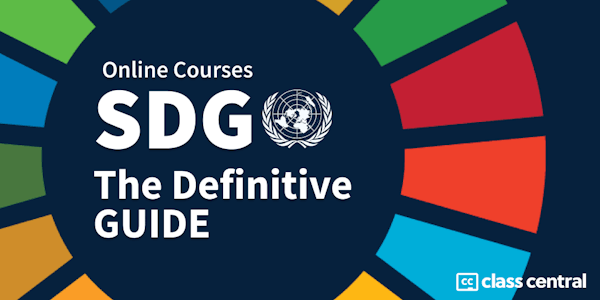Overview
Class Central Tips
How can we live a good life on one planet with over seven billion people?
This course will explore greening the economy on four levels – individual, business, city, and nation. We will look at the relationships between these levels and give many practical examples of the complexities and solutions across the levels. Scandinavia, a pioneering place advancing sustainability and combating climate change, is a unique starting point for learning about greening the economy. We will learn from many initiatives attempted in Scandinavia since the 1970s, which are all potentially helpful and useful for other countries and contexts.
The International Institute for Industrial Environmental Economics (IIIEE) at Lund University is an international centre of excellence on strategies for sustainable solutions. The IIIEE is ideally suited to understand and explain the interdisciplinary issues in green economies utilising the diverse disciplinary backgrounds of its international staff. The IIIEE has been researching and teaching on sustainability and greener economies since the 1990s and it has extensive international networks connecting with a variety of organizations.
Syllabus
- Introduction: what is a green economy and why is it important?
- We start the course by looking at the key issues that a green economy seeks to address and the underlying concepts and definitions of a greener economy. In this module, we will describe problems arising from the interaction of the economy and the environment; we will state some of the aims of greening the economy and look into the multitude of definitions; we will use tools to measure and assess a green economy; and we will discuss concepts and indicators related to the green economy.
- Individual choices
- Here in Module 2 we look at the individual level and how individual choices can help or hinder progress towards a green economy. This module offers an increased understanding of patterns and levels of consumption; we will look at the drivers and theories of consumer behaviour and the limitations of working with consumer choice in isolation (e.g. rebound effect); and develop an understanding of how to measure the impact of consumption (e.g. carbon footprint).
- Business strategies
- In the third module, we look at the business level, focusing on how companies and organisations choose strategies that can help transitions to a green economy. In this module, the aim is to understand the changes relevant to the business level for a greener economy. You will be presented to some solutions and concepts that companies use to deal with complex problems encountered in their sustainability work. We will discuss the challenges facing companies that want to take a lead in the transition to a greener economy, and reflect on strategies for green business in different contexts.
- Sustainable cities
- In Module 4, we look at how planning and designing cities can help achieve a green economy and underpin sustainable development. The aim this week is to understand the role of cities for experimentation, planning, collaboration and providing visions for a greener economy. We will use tools to measure and critically assess green economy indicators at the city level and discuss whether city level policies and actions in Scandinavia can work around the world.
- National policies
- Finally, in the fifth module, we look at how national governments can establish policies to promote green economy across the different levels (individual, business, city, national) discussed in this course. In this module, we discuss how national level policies affect cities, business, and individuals, as well as the challenges for national level policies to influence other levels, including the international sphere. Finally, we will discuss whether national policies from Scandinavia can work in other contexts
Taught by
Kes McCormick, Beatrice Kogg, Luis Mundaca, Oksana Mont, Lena Neij and Thomas Lindhqvist
Reviews
3.9 rating, based on 7 Class Central reviews
4.7 rating at Coursera based on 583 ratings
Showing Class Central Sort
-
This course gives an introduction to the 'Green Economy' and presents a lot of examples of what it means ans how it's being put to practice in Nordic countries. The lessons are easy and enjoyable but the readings give a more in depth explanation if that's what you want.
-
I took this course because I wanted to know about green economy (a concept that I hadn't hear before). The course itself was easy and I enjoyed watching all the lessons and reading the compendium (which cover the same topics), which covers the basic concepts. But if you look at the further reading section you can learn a lot more. One of the most interesting things in the course was grading peers' projects, because by doing so you discover a lot of innovative green products, companies and cities.
-
Great course for anyone interested in sustainability. The lessons provide a clear view of the progress made in the Scandinavian countries. The assignments will help you to design your own picture of sustainable businesses and cities. I recommend this course as well as the second course in this serie Greening the Economy: Sustainable cities. I took both and was surprised by the quality and the fact that the information is still presented comprehensively.
-
-
-








